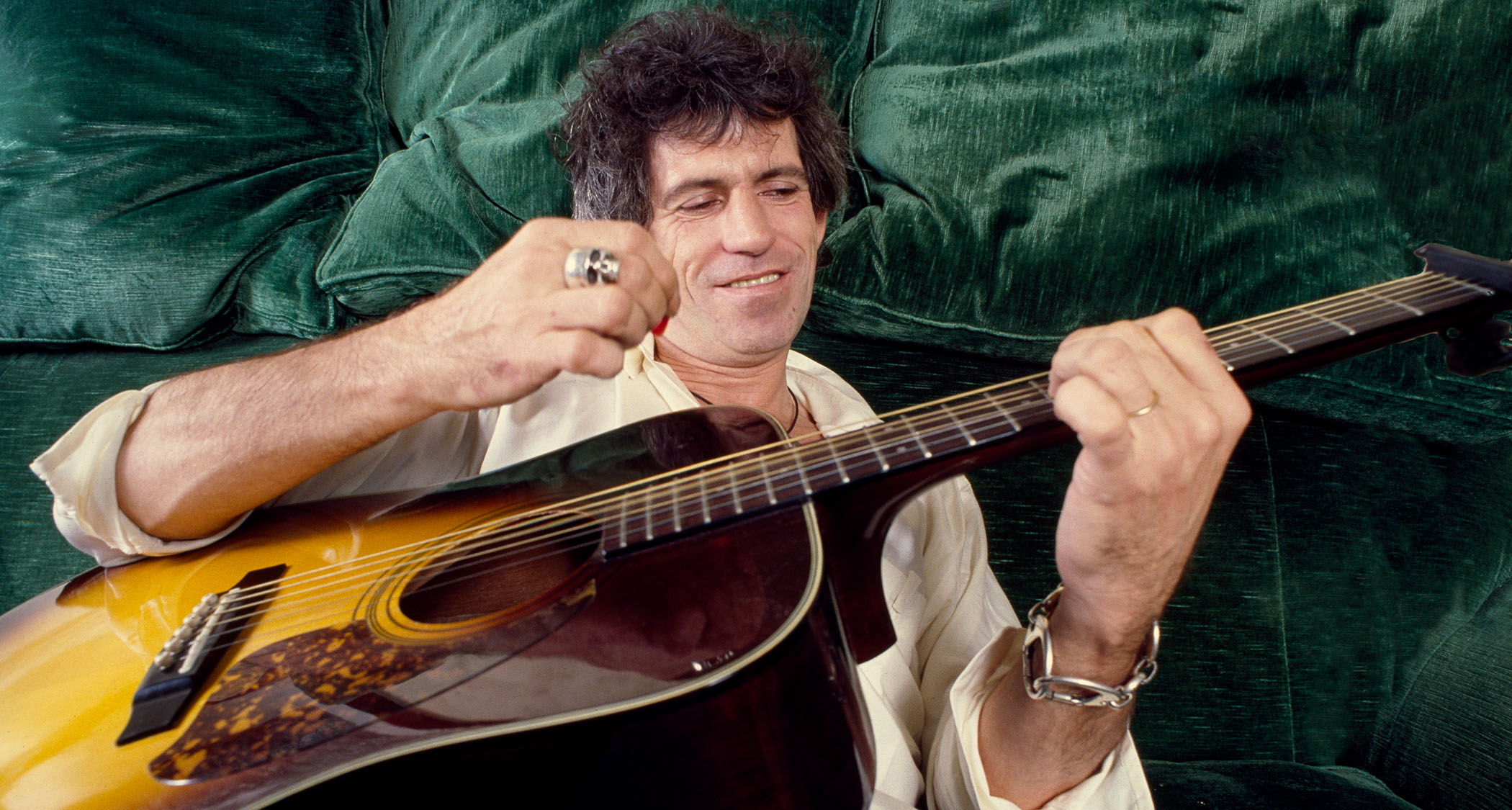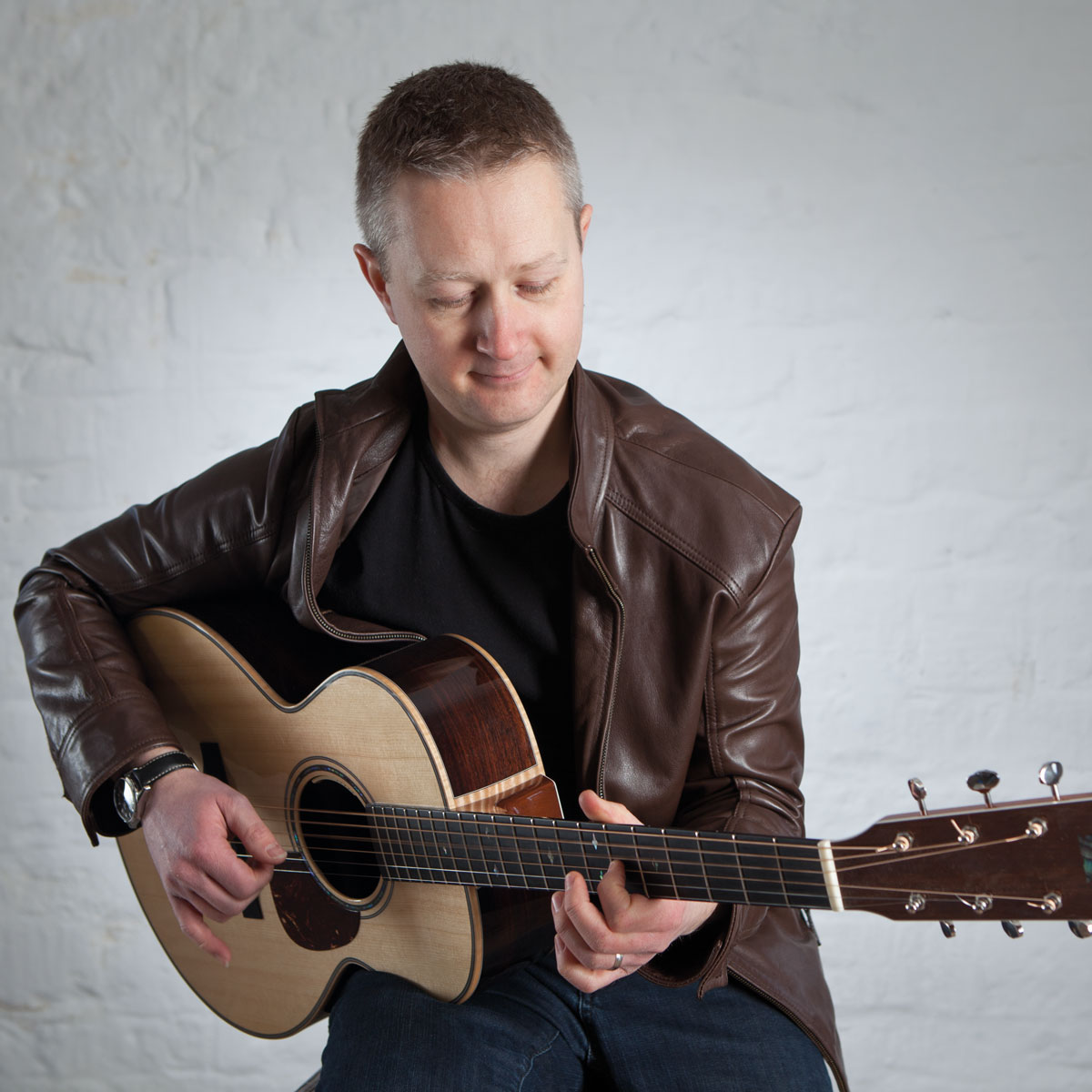Keith Richards is an electric guitar icon, but he prefers playing acoustic – and his unplugged Rolling Stones approach is full of smart ideas
Every player can learn a few tricks from Keef's characterful acoustic style – even if his rhythmic swagger will take longer to master

Picture Keith Richards, and your first image is probably of the Tele-toting, bandana-wearing wildman of rock. However, explore The Rolling Stones’ back catalogue and you’ll see that acoustic instruments feature heavily, from strummed and picked acoustic guitars to 12-strings, mandolins and Nashville-tuned guitars (the high strings from a 12-string set).
For the acoustic singer-songwriter or accompanist, the styles of Richards and his accomplice Ronnie Wood are essential study.
Keith Richards was born in 1943 in Dartford, Kent. His grandfather Gus Dupree was a working musician who famously told the young Keith that he would give him guitar lessons when he could reach the instrument on the shelf. Richards finally got the guitar in his hands and lessons began.
His early influences were the prominent jazz musicians of the time, principally Duke Ellington and Louis Armstrong. However his first guitar hero was Scotty Moore, the rockabilly legend and sideman to Elvis Presley. While Richards would develop his own sound and approach, you can always hear a bit of Scotty Moore in his playing.
Richards famously met Mick Jagger at school and their shared love of blues became the bedrock of the Rolling Stones sound. Their rock and roll side was defined by Richards’ love of Chuck Berry and Muddy Waters, and this accounts for his ability to move from rhythm to lead and back again within the space of a bar.
Although Richards famously favours open G tuning and just five strings for a lot of his rhythm work, he also frequently uses standard tuning and that’s what I’ve opted for here.
This is partly to save you the bother of re-tuning your guitar but also so that hopefully you’ll be able to hear the colour he gets from his rhythm parts when using standard tuning.
Triads form the basis of his picking style and he will add open strings to give these chords greater richness. For example, he will replace a D major triad with a Dadd9, taking advantage of the open first string.
His characteristic rhythmic swagger is harder to approximate, however. Aim for a loose, relaxed feel and pay attention to the swing of the rhythm section – you are not aiming to play it straight.
Interestingly, Richards’ first love is actually acoustic guitar. He views electric as more limited and prefers the challenge that acoustic playing can offer him. Delve into the music of The Rolling Stones and you are guaranteed to find plenty of acoustic!
Get the tone
Amp Settings: Gain 2, Bass 7, Middle 6, Treble 7, Reverb 2
As you’d expect, Richards has a large and enviable guitar collection. The acoustic he used most was a Gibson Hummingbird, and you’ll hear this guitar on Jumpin’ Jack Flash among others.
These days, however, you are more likely to see him with a 1964 Martin 00-21. For this recording I used my Martin Custom Expert 1937 D-28 through a Soyuz 017 FET microphone for recording guitar.
[Bars 1-16] To play the A major chord use a partial barre with the first finger across the fourth, third and second fingers as this will make for a smoother move to the following Dadd9 chord.
To play the Dadd9 use the third finger at the 4th fret of the fourth string, the first finger at the 1st fret of the third string and the second finger on the 3rd fret of the fourth string. Make sure the second finger isn’t touching the open first string or you’ll mute the vital E (9th/2nd) note.
[Bars 17-33] As with many classic rock and roll players you can try hooking the thumb over the sixth string to the play the D/F# chord that follows the G. When moving from the G chord, keep the third finger on the 3rd fret of the second string as it acts as an ‘anchor’ for the D/F#.
You can also use the first finger to fret the sixth string but when you get used to using the thumb it’s actually much easier (many players of the era used ‘thumb over’ instead of barre chords, too).
Get The Pick Newsletter
All the latest guitar news, interviews, lessons, reviews, deals and more, direct to your inbox!
Stuart Ryan is best known for his acoustic guitar playing, from Celtic fingerpicking and traditional folk to modern percussive phrasing and fresh interpretations of popular pieces. He has released several solo albums, written pieces for UK examination boards and created nine tutorial books ranging from acoustic guitar arrangements to Americana styles.
“I suppose I felt that I deserved it for the amount of seriousness that I’d put into it. My head was huge!” “Clapton is God” graffiti made him a guitar legend when he was barely 20 – he says he was far from uncomfortable with the adulation at the time
“I was in a frenzy about it being trapped and burnt up. I knew I'd never be able to replace it”: After being pulled from the wreckage of a car crash, John Sykes ran back to his burning vehicle to save his beloved '76 Les Paul










![Joe Bonamassa [left] wears a deep blue suit and polka-dotted shirt and plays his green refin Strat; the late Irish blues legend Rory Gallagher [right] screams and inflicts some punishment on his heavily worn number one Stratocaster.](https://cdn.mos.cms.futurecdn.net/cw28h7UBcTVfTLs7p7eiLe.jpg)


